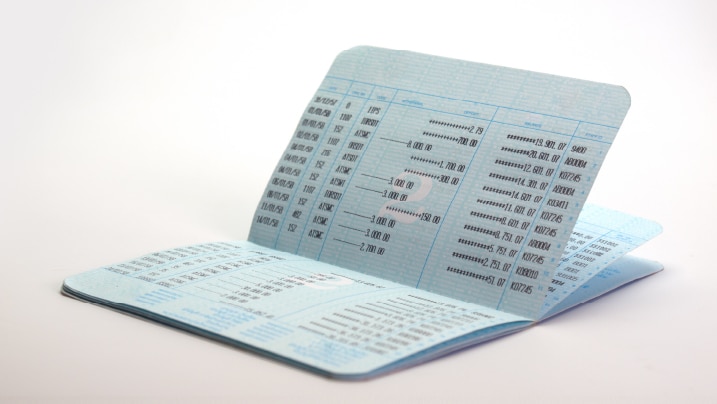CKYC Registry
-
Customer Service Contact us Service request Locate a branch
Find all the help you need
Scan the QR, get our app, and find help on your fingertips

Help CenterSupport topics, Contact us, FAQs and more
-
Login
Are you ready for an upgrade?
Login to the new experience with best features and services
-
Login
Are you ready for an upgrade?
Login to the new experience with best features and services
- Accounts
-
Deposits
IDFC FIRST Bank Deposits
View all Deposits -
Loans
IDFC FIRST Bank Loans
View all Loans - Wealth & Insure
-
Payments
IDFC FIRST Bank Payments
View all Payments -
Cards
IDFC FIRST Bank Cards
View all Cards - Blogs
- Corporate Account
-
Cash Management Services
IDFC FIRST Bank Cash Management Services
View all Cash Management Services - Supply Chain Finance
-
Corporate Lending
IDFC FIRST Bank Lending
View all -
Treasury
IDFC FIRST Bank Treasury
See more details - NBFC Financing
Support topics, Contact us, FAQs and more
- IDFC FIRST Bank Accounts
-
Savings Account
-
Corporate Salary
Account -
Senior Citizens
Savings Account -
First Power
Account -
Current Account
-
NRI Savings
Account -
TASC Institutional
Account -
Savings Account
Interest Calculator
- IDFC FIRST Bank Deposits
-
Fixed Deposit
-
Recurring Deposit
-
NRI Fixed Deposit
-
Safe Deposit Locker
-
FD Calculator
-
RD Calculator
- IDFC FIRST Bank Loans
-
Personal Loan
-
Consumer Durable
Loan -
Home Loan
-
Business Loan
-
Professional Loan
-
Education Loan
-
New Car Loan
-
Pre-owned Car Loan
-
Two Wheeler Loan
-
Pre-owned Two
Wheeler Loan -
Commercial Vehicle
Loan -
Gold Loan
-
Loan Against Property
-
Loan Against Securities
-
Easy Buy EMI card
-
Personal Loan
EMI Calculator -
Education Loan
EMI Calculator -
Home Loan
EMI Calculator -
EMI Calculator
-
Personal Loan Eligibility Calculator
- IDFC FIRST Bank Wealth & Insure
-
FIRST Select
-
FIRST Wealth
-
FIRST Private
-
Mutual Funds
-
Sovereign Gold Bond
-
Demat Account
-
Term Insurance
-
Life Insurance
-
Health Insurance
-
General Insurance
-
Bonds
-
Loan Against
Securities -
Portfolio Management
Service
- IDFC FIRST Bank Payments
-
FASTag
-
Credit Card
Bill Payments -
UPI
-
Funds Transfer
-
Forex Services
-
Pay Loan EMI
- IDFC FIRST Bank Cards
-
Ashva :
Metal Credit Card -
Mayura :
Metal Credit Card -
FIRST Millennia
Credit Card -
FIRST Classic
Credit Card -
FIRST Select
Credit Card -
FIRST Wealth
Credit Card -
FIRST WOW!
Credit Card -
Deals
-
Debit Cards
-
Co-branded Cards
-
Credit Card
EMI Calculator -
FIRST Corporate
Credit Card -
FIRST Purchase
Credit Card -
FIRST Business
Credit Card
- Premium Metal Credit Cards
-
AshvaLifestyle1% Forex₹2,999
-
MayuraLifestyleZero Forex₹5,999
-
FIRST PrivateInvite Only
- Best for travellers
-
MayuraZero ForexMetal₹5,999
-
Ashva1% ForexMetal₹2,999
-
FIRST WOW!Zero ForexTravelLifetime Free
-
FIRST SWYPTravel OffersEMI₹499
-
FIRST Select1.99% ForexLifestyleLifetime Free
-
FIRST Wealth1.5% ForexLifestyleLifetime Free
-
Club VistaraTravelLifestyle₹4,999
-
IndiGo IDFC FIRST Dual Credit CardTravelLifestyle₹4,999
- Max benefits, Free for life
-
FIRST Classic10X RewardsShoppingNever Expiring Rewards
-
FIRST Millennia10X RewardsShoppingNever Expiring Rewards
-
FIRST Select10X RewardsLifestyle1.99% Forex
-
FIRST Wealth10X RewardsLifestyle1.5% Forex
-
FIRST WOW!RewardsTravelZero Forex
-
LIC ClassicRewardsInsuranceShopping
-
LIC SelectRewardsInsuranceShopping
- Reward Multipliers
-
AshvaLifestyleMetal₹2,999
-
MayuraLifestyleZero Forex₹5,999
-
FIRST ClassicNever Expiring RewardsShoppingLifetime Free
-
FIRST MillenniaNever Expiring RewardsShoppingLifetime Free
-
FIRST SelectNever Expiring RewardsLifestyleLifetime Free
-
FIRST WealthNever Expiring RewardsLifestyleLifetime Free
- Rewards & Credit on UPI
-
FIRST Power+FuelUPI₹499
-
FIRST PowerFuelUPI₹199
-
FIRST EA₹NVirtual1% Cashback₹499
-
FIRST DigitalVirtualUPI₹199
-
IndiGo IDFC FIRST Dual Credit CardUPITravelDual cards
- Fuel and Savings
-
FIRST PowerRewardsUPI₹199
-
FIRST Power+RewardsUPI₹499
-
LIC ClassicRewardsInsuranceShopping
-
LIC SelectRewardsInsuranceShopping
- Express and Flaunt
-
AshvaMetal1% Forex₹2,999
-
MayuraMetalZero Forex₹5,999
-
FIRST SWYPEMIOfferMAX₹499
-
FIRST MillenniaRewardsShoppingLifetime Free
- FD Backed rewarding Credit Cards for all
-
FIRST EA₹NVirtualCashback₹499
-
FIRST WOW!Zero ForexTravelLifetime Free
-
CreditPro Balance TransferTransfer & SaveReduce InterestPay Smartly
- IDFC FIRST Bank NRI Forex Solutions
-
Send money to India-Wire transfer
-
Send money to India-Digitally
-
Send money abroad
-
Max Returns FD (INR)
- IDFC FIRST Bank MSME Accounts
-
Platinum Current
Account -
Gold
Current Account -
Silver Plus
Current Account -
Merchant Multiplier
Account -
Agri Multiplier
Account -
TASC Institutional
Account -
Dynamic Current
Account -
World business
Account -
First Startup
Current Account
- IDFC FIRST Bank Business Loans
-
Business Loan
-
Professional Loan
-
Loan Against Property
-
Business Loan for Women
-
Working Capital Loan
-
Construction Equipment Loan
-
Machinery Loan
-
Healthcare Equipment Loan
- IDFC FIRST Bank Business Solutions
-
Payment Solutions
-
Tax Payments
-
Doorstep Banking
-
Point of Sale (POS)
-
Escrow Accounts
-
NACH
-
Payment Gateway
-
UPI
-
Virtual Accounts
-
As per amendment in the Income Tax Rules, PAN or Aadhaar are to be mandatorily quoted for cash deposit or withdrawal aggregating to Rupees twenty lakhs or more in a FY. Please update your PAN or Aadhaar. Kindly reach out to the Bank’s contact center on 1800 10 888 or visit the nearest IDFC FIRST Bank branch for further queries.
-
-
Most Searched
Sorry!
We couldn’t find ‘’ in our website
Here is what you can do :
- Try checking the spelling and search
- Search from below suggestions instead
- Widen your search & try a more generic keyword
Suggested
Get a Credit Card
Enjoy Zero Charges on All Commonly Used Savings Account Services
Open Account Now
Savings Account
What is Average Monthly Balance (AMB)? Know its impact, how to calculate and more
Key Takeaways
Average Monthly Balance or AMB is the average amount that you as a savings account holder must keep in your savings account every month, to avoid facing non maintenance charges.
Most banks, including IDFC FIRST Bank, calculate AMB using the end-of-the-day balance or daily closing balances in savings accounts, which are summed up over a given month to determine the monthly average balance.
The closing day balances for a 31-day month are totalled, and the sum is divided by 31 to get the average.
A savings accountholder needs to maintain their account’s monthly average balance to avoid facing non maintenance charges
According to banking terminologies, average monthly balance or AMB is the average amount that you must keep in your savings account every month. Understanding the meaning of AMB and its working is crucial for account holders, as it determines whether they will incur maintenance charges or not and qualify for certain benefits. If the account’s average monthly balance is not maintained, a maintenance charge is levied by the bank based on its internal policies.. The AMB amount is computed at the end of each month.
READ MORE
Why is it important to maintain a monthly average balance?
Maintaining a set monthly average balance ensures your account remains in good standing and qualifies for specific benefits associated with your savings account type. A consistent AMB may also offer the following advantages:
- Fee waivers and service benefits: Accounts with higher AMB often come with waivers on certain service charges, such as cheque books, ATM withdrawals, and even some financial products.
- Avoidance of penalties: Falling short of the required AMB can attract penalties, which can add up and impact your savings over time.
- Better savings: When you keep adequate funds in your savings account, you earn better interest rates that can help you grow your money over a period of time.
To fulfil AMB requirements, you must keep sufficient amount in your account because if the AMB is not maintained, banks can levy certain charges.
Is it better to go for accounts with a monthly average balance requirement or not?
The decision between accounts with or without an AMB requirement depends on your financial standing and how you manage funds.
- For active savers: If you maintain regular savings, an account with an AMB requirement can be suitable as it often brings additional perks and interest benefits.
- For low-balance users: Accounts without AMB requirements, such as zero-balance accounts, are more flexible, allowing you to avoid penalties while accessing essential banking services.
- Transactional needs: For those who make frequent, high-value transactions, AMB accounts often come with better facilities and support depending on the bank and account type.
How to calculate monthly average balance?
Understanding AMB calculation is essential to ensure you stay within the required balance range. Here’s a step-by-step breakdown:
- Calculate daily balance: Note down the closing balance of your account at the end of each day throughout the month.
- Sum up daily balances: Add all the daily closing balances for the month.
- Divide by number of days: Divide the total by the number of days in the month (30 or 31). For February, divide by 28 or 29 based on the year.
Formula:
Monthly Average Balance=Total Daily Balances of the Month/Number of Days in the Month
This calculation will give you the AMB, which should meet the minimum limit set by the bank to avoid charges.
Example calculation
Imagine it’s a 30-day month, and your balance varied as follows:
- For the first 15 days, you maintained a balance of ₹40,000.
- On the 16th day, you deposited ₹20,000, bringing the balance to ₹60,000 for the remaining 15 days.
Here’s the calculation:
- Total Balance for the First 15 Days:
- Total Balance for the Remaining 15 Days:
- Sum of Daily Balances for the Month:
- Monthly Average Balance (AMB):
AMB=15,00,000/30=50,000
40,000×15=6,00,000
60,000×15=9,00,000
6,00,000+9,00,000=15,00,000
Tips to maintain minimum average monthly balance
- Automate regular deposits: Set up a monthly auto-deposit from your salary account to maintain the AMB without manual intervention. With the IDFC FIRST Bank Mobile App, you can setup auto-transfers with just a few taps and without any additional cost.
- Keep a buffer: Maintain a slightly higher balance than the minimum requirement to cushion against occasional low-balance days.
- Plan withdrawals wisely: Avoid withdrawing large sums toward the beginning of the month as it may lower your daily balance, impacting the monthly average.
- Track balance regularly: Use mobile banking apps or SMS alerts to keep track of your balance and ensure it stays above the required limit. With IDFC FIRST Bank’s net banking and mobile banking, you get an insightful dashboard where you can check standings of all your accounts at one place and take necessary actions.
Conclusion
Maintaining the required average monthly balance is a simple yet effective way to optimise your account benefits while avoiding penalties. Consider whether an AMB account aligns with your financial habits and choose a structure that best supports your goals. Making use of these tips can help you maintain the average monthly balance of your accounts conveniently. Also, it is best to keep track of all your account information with a mobile banking app.
Disclaimer
The contents of this article/infographic/picture/video are meant solely for information purposes. The contents are generic in nature and for informational purposes only. It is not a substitute for specific advice in your own circumstances. The information is subject to updation, completion, revision, verification and amendment and the same may change materially. The information is not intended for distribution or use by any person in any jurisdiction where such distribution or use would be contrary to law or regulation or would subject IDFC FIRST Bank or its affiliates to any licensing or registration requirements. IDFC FIRST Bank shall not be responsible for any direct/indirect loss or liability incurred by the reader for taking any financial decisions based on the contents and information mentioned. Please consult your financial advisor before making any financial decision.
The features, benefits and offers mentioned in the article are applicable as on the day of publication of this blog and is subject to change without notice. The contents herein are also subject to other product specific terms and conditions and any third party terms and conditions, as applicable. Please refer our website www.idfcfirstbank.com for latest updates.























